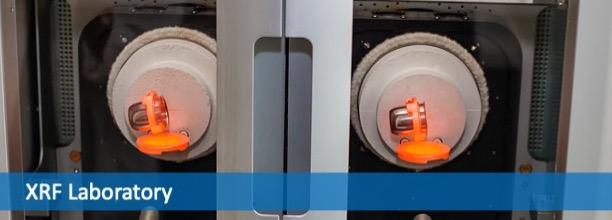
XRF Laboratory Capabilities:
X-ray fluorescence (XRF) spectroscopy uses an X-ray source to eject core-shell electrons from an atom to create an excited state. The resulting cascade of electrons to fill the holes results in emission of X-radiation from the atom (fluorescence) that has a characteristic wavelength/energy specific to each element. The fluorescence can be quantified to enable elemental analysis from ppm to percent. Our lab has wavelength dispersive XRF, energy dispersive XRF instruments for elemental quantitative analysis for bulk materials. Our laboratory also has a Bruker M4 Tornado μ-XRF instrument for elemental distribution analysis with excellent spatial resolution.
In addition to XRF, the laboratory has a number of elemental combustion instruments for elemental analysis (C, H, N, S, and O) of a variety of solid samples, and also provides clay identification by XRD. Please see the "Techniques" webpage for more information on sample submission and costs (upper right hand side of this page).
Do you plan to use the XRF lab? Contact Helen or Tasmia for all sample service queries. For large numbers of samples researchers may be able to undergo training and induction on selected sample preparation gear and instruments. Sample submission forms can be found under "related documents" to the right of this page.
Instrumentation in the XRF Laboratory:
- Wavelength Dispersive XRF Spectrometers (PANalytical AXIOS).
- ED-XRF (PANalytical Epsilon).
- CHNSO macro combustion analysis of organics (Elementar varioMACRO cube for CHNS and rapidOXY cube for oxygen).
- Bruker M4 TORNADO μ-XRF for elemental distribution analysis.
- Sample preparation: ring mill, micronising mill, furnaces for glass bead preparation, press for pellet preparation.






